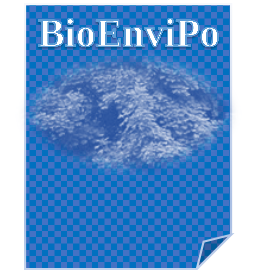Intense work for mangrove planting, forest, and land rehabilitation efforts, and generating the coastal community economy in the pandemic era
DOI:
https://doi.org/10.31763/bioenvipo.v2i2.607Keywords:
Coastal Community , Forest rehabilitation, Mangrove, PandemicAbstract
Mangrove forest is a unique, transitional ecosystem between seawater and freshwater ecosystems. Indonesia has an existing mangrove area of 3,364,081 Ha, of which the area of potential mangrove habitat is 756,183 Ha. The high value of this mangrove ecosystem places mangroves as one of the targets for rehabilitation in Indonesia. South Sumatra Province is one of Indonesia’s provinces with high mangrove potential. During the Covid-19 pandemic, the activities of the business world experienced significant disruption in production, distribution, and other operational activities, ultimately disrupting the performance of the national economy. Along with the decline in the Indonesian economy as a result of the Covid 19 Pandemic, it automatically has an impact on the economic conditions of the people who live in coastal areas, where most of their lives depend on the pond business they manage or even from fishing with an unstable income level. This review highlights the progress aimed at mangrove planting and forest rehabilitation during the pandemic era by generating the coastal community in South Sumatra.
References
Kuenzer, C., Bluemel, A., Gebhardt, S., Quoc, T. V. & Dech, S. Remote sensing of Mangrove ecosystems: A Review. Remote Sensing 3, 878-928 (2011). https://doi.org:10.3390/rs3050878
Utami, W., Wibowo, Y. A., Hadi, A. H. & Permadi, F. B. The impact of mangrove damage on tidal flooding in the subdistrict of Tugu, Semarang, Central Java. Journal of Degraded and Mining Lands Management 9, 3093-3105 (2021). https://doi.org:10.15243/jdmlm.2021.091.3093
Ahmad, T., Tjaronge, M. & Cholik, F. The use of Mangrove stands for shrimp Ppond waste-water treatment. Indonesian Fisheries Research Journal 7 (2017). https://doi.org:10.15578/ifrj.7.1.2001.7-15
Alongi, D. M. Mangrove forests: Resilience, protection from tsunamis, and responses to global climate change. Estuarine, Coastal and Shelf Science 76, 1-13 (2008). https://doi.org:10.1016/j.ecss.2007.08.024
Ray, R. et al. Dissolved and particulate carbon export from a tropical mangrove‐dominated riverine system. Limnology and Oceanography 66, 3944-3962 (2021). https://doi.org:10.1002/lno.11934
Mandal, S. K. et al. State of rare earth elements in the sediment and their bioaccumulation by mangroves: a case study in pristine islands of Indian Sundarban. Environ Sci Pollut Res Int 26, 9146-9160 (2019). https://doi.org:10.1007/s11356-019-04222-1
Meng, Y. et al. Relationships between above- and below-ground carbon stocks in mangrove forests facilitate better estimation of total mangrove blue carbon. Carbon Balance Manag 16, 8 (2021). https://doi.org:10.1186/s13021-021-00172-9
Eddy, S., Mulyana, A., Iskandar, I. & Ridho, M. R. Community-based Mangrove forest conservation for sustaibable fisheries``. Jurnal Silvikulter Tropika 7 (2016). https://doi.org:10.31219/osf.io/x659w
Asari, N., Suratman, M. N., Mohd Ayob, N. A. & Abdul Hamid, N. H. in Mangroves: Ecology, Biodiversity and Management Ch. Chapter 13, 305-322 (2021).
Anugrah, N. (Kementerian Lingkungan Hidup dan Kehutanan, 2021).
Suparjo, M. N. Daya dukung lingkungan perairan tambak desa Mororejo Kabupaten Kendal. Saintek Perikanan: Indonesian Journal of Fisheries Science and Technology 4, 50-55 (2008).
Kridalaksana, A., Subiyanto & Suryanto, A. Pengelolaan tambak dan mangrove di area pertambakan di desa Mororejo, Kecamatan Kaliwungu, Kabupaten Kendal. Management of Aquatic Resources Journal (MAQUARES) 3, 148-156 (2014).
Warsito, B. et al. Silvofishery as an alternative system of sustainable aquaculture in mororejo village, kendal regency. E3S Web of Conferences 202 (2020). https://doi.org:10.1051/e3sconf/202020206043
Alimuna, W., Sunarto & Murti, S. H. Pengaruh akktivitas masyarakat terhadap kerusakan Hutan Mangrove di Desa Gamlamo, Kecamatan Jailolo, Kabupaten Halmahera Barat. Majalah Geografi Indonesia 23 (2009).
Branoff, B. L. Quantifying the influence of urban land use on mangrove biology and ecology: A meta-analysis. Global Ecology and Biogeography 26, 1339-1356 (2017). https://doi.org:10.1111/geb.12638
Elwin, A., Bukoski, J. J., Jintana, V., Robinson, E. J. Z. & Clark, J. M. Preservation and recovery of mangrove ecosystem carbon stocks in abandoned shrimp ponds. Sci Rep 9, 18275 (2019). https://doi.org:10.1038/s41598-019-54893-6
Wijaya, N. I. & Yulianda, F. Model pengelolaan Kepiting Bakau untuk kelestarian habitat Mangrove di Taman Nasional Kutai Provinsi Kalimantan Timur (The model of mud Crab (Scylla serrata) management for habitat preservations of Mangrove in Kutai National Park, East Kalimantan Province). Jurnal Manusia dan Lingkungan 24 (2018). https://doi.org:10.22146/jml.23079
Harefa, M. S., Nasution, Z., Mulya, M. B. & Maksum, A. Mangrove species diversity and carbon stock in silvofishery ponds in Deli Serdang District, North Sumatra, Indonesia. Biodiversitas Journal of Biological Diversity 23 (2022). https://doi.org:10.13057/biodiv/d230206
Nuryanto, A. Sylvofishery (Mina Hutan): Pendekatan pemanfaatan hutan mangrove secara lestari (Institut Pertanian Bogor, 2003).
Downloads
Published
How to Cite
Issue
Section
License
Copyright (c) 2022 Yunita Dwi Hastuti, Nisrina Salsabila

This work is licensed under a Creative Commons Attribution-ShareAlike 4.0 International License.
Authors who publish with BIOLOGICAL ENVIRONMENT AND POLLUTION agree to the following terms:
- Authors retain copyright and grant the journal right of first publication with the work simultaneously licensed under a Creative Commons Attribution License (CC BY-SA 4.0) that allows others to share the work with an acknowledgment of the work's authorship and initial publication in this journal.
- Authors are able to enter into separate, additional contractual arrangements for the non-exclusive distribution of the journal's published version of the work (e.g., post it to an institutional repository or publish it in a book), with an acknowledgment of its initial publication in this journal.
- Authors are permitted and encouraged to post their work online (e.g., in institutional repositories or on their website) prior to and during the submission process, as it can lead to productive exchanges, as well as earlier and greater citation of published work.


